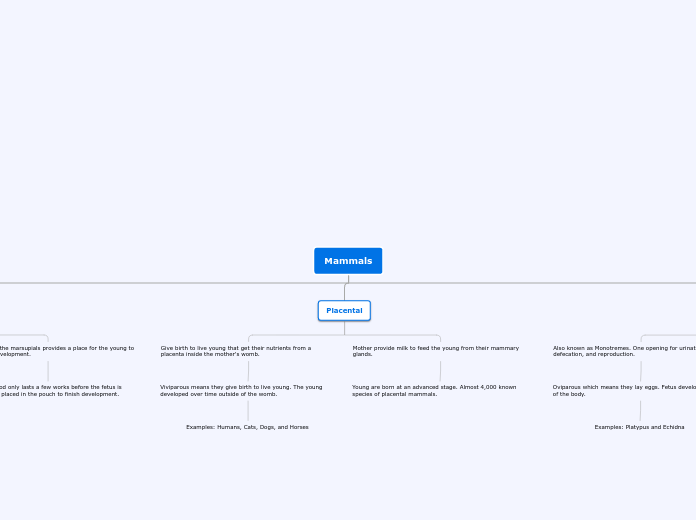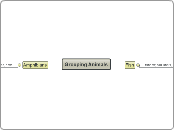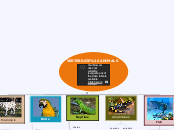Mammals
Egg-layers
Brains do not have connective tissue between the two hemispheres. Similar to reptiles because they have a spur in their ankle area.
Endothermic which means they maintain their body temperature inside. Has hair on body. Four chambered heart.
Also known as Monotremes. One opening for urination, defecation, and reproduction.
Oviparous which means they lay eggs. Fetus develops outside of the body.
Examples: Platypus and Echidna
Placental
Mother provide milk to feed the young from their mammary glands.
Young are born at an advanced stage. Almost 4,000 known species of placental mammals.
Give birth to live young that get their nutrients from a placenta inside the mother's womb.
Viviparous means they give birth to live young. The young developed over time outside of the womb.
Examples: Humans, Cats, Dogs, and Horses
Marsupials
The pouch of the marsupials provides a place for the young to
finish their development.
Gestation period only lasts a few works before the fetus is born and then placed in the pouch to finish development.
Give birth to live young then the young live inside a pouch
until they are old enough to leave.
Most live in Australia or the Americas.
Examples: Kangaroos, Wallabies, Koalas, Possums, Wombats









